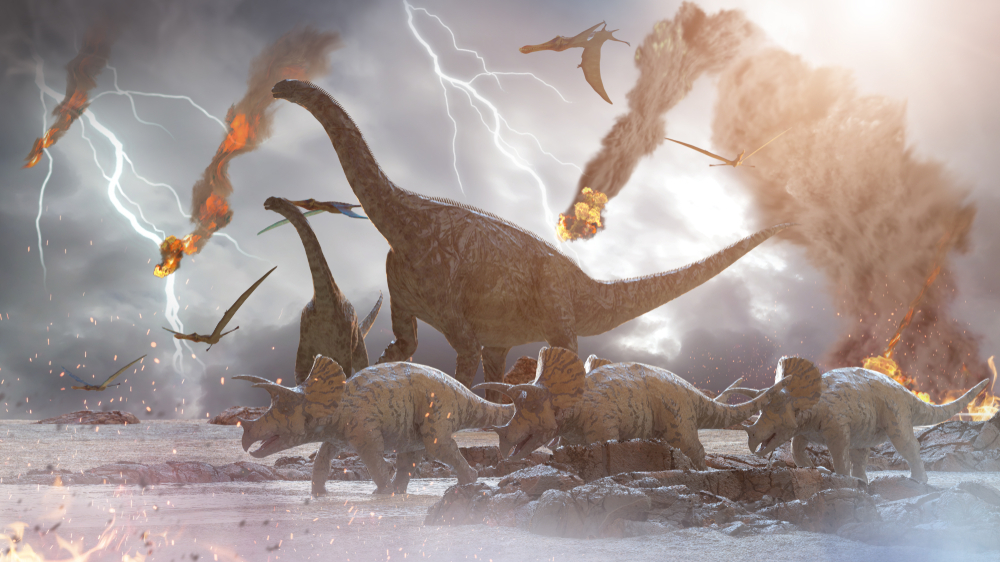At the end of the Cretaceous period, about 66 million years ago, a 10-km impactor crashed into Earth near the site of the small town of Chicxulub in what is now Mexico. The impact unleashed an incredible amount of climate-changing gases into the atmosphere, triggering a chain of events that led to the extinction of non-avian dinosaurs and 75% of life on the planet. In a new paper published in the journal Scientific Reports, Harvard University astrophysicists Amir Siraj and Professor Avi Loeb put forth a new theory that could explain the origin and journey of the Chicxulub impactor.

The Chicxulub impactor hit Earth at an angle of about 60 degrees, which is among the worst-case scenarios for the lethality of the impact by the production of climate-changing gases. Image credit: Chase Stone.
A popular theory on the origin of the Chicxulub impactor claims that the object originated from the main belt, which is an asteroid population between the orbit of Jupiter and Mars.
Evidence found at the Chicxulub crater suggests the rock was composed of carbonaceous chondrite. However, carbonaceous chondrites are rare amongst main-belt asteroids, but possibly widespread amongst long-period comets, providing additional support to the cometary impact hypothesis.
:focal(1009x685:1010x686)/https://tf-cmsv2-smithsonianmag-media.s3.amazonaws.com/filer/49/08/4908de3e-9f0f-427b-9bb0-2b157ccf19fa/e1k5r6.jpg)
Using statistical analysis and gravitational simulations, Siraj and Professor Loeb calculate that a significant fraction of long-period comets originating from the Oort cloud, an icy sphere of debris at the edge of the Solar System, can be bumped off-course by Jupiter’s gravitational field during orbit.
“The Solar System acts as a kind of pinball machine. Jupiter, the most massive planet, kicks incoming long-period comets into orbits that bring them very close to the Sun,” Siraj said.

During close passage to the Sun, the comets — nicknamed sungrazers — can experience powerful tidal forces that break apart pieces of the rock and ultimately, produce cometary shrapnel.
“In a sungrazing event, the portion of the comet closer to the sun feels a stronger gravitational pull than the part that is further, resulting in a tidal force across the object,” Siraj said.
“You can get what’s called a tidal disruption event, in which a large comet breaks up into many smaller pieces. And crucially, on the journey back to the Oort cloud, there’s an enhanced probability that one of these fragments hit the Earth.”

The new calculations increase the chances of long-period comets impacting Earth by a factor of about 10, and show that about 20% of long-period comets become sungrazers.
This rate is consistent with the age of Chicxulub, providing a satisfactory explanation for its origin and other impactors like it.
“Our paper provides a basis for explaining the occurrence of this event,” Professor Loeb said.
“We are suggesting that, in fact, if you break up an object as it comes close to the Sun, it could give rise to the appropriate event rate and also the kind of impact that killed the dinosaurs.”
Source: sci.news








